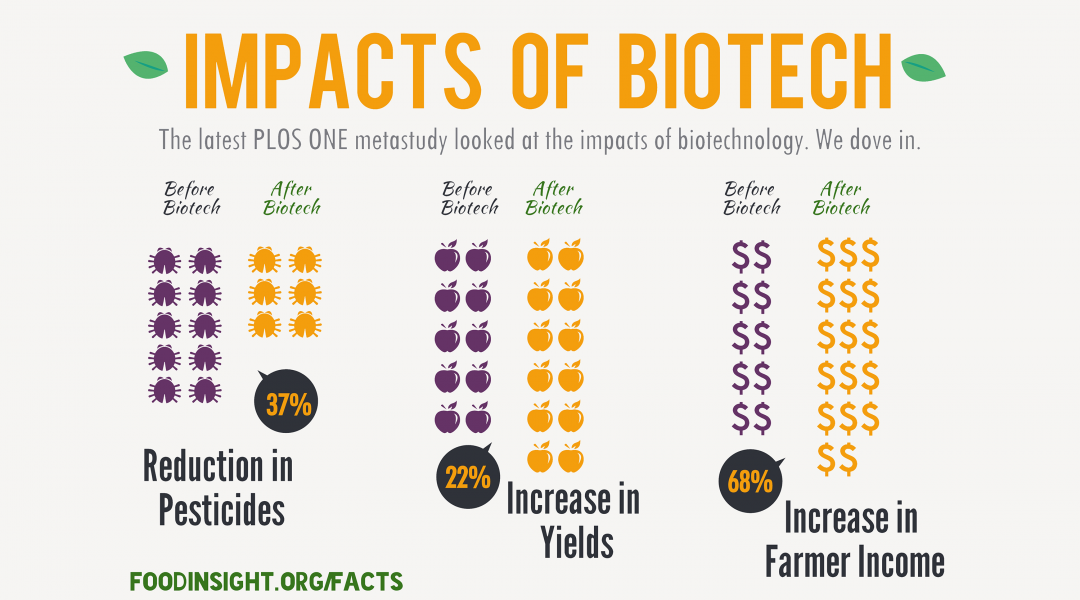
Special Interests Crying Wolf Over Genetically Engineered Crops

There have been calls recently from predictable sources demanding “tougher regulations for genetically engineered (GE) crops under the federal Plant Protection Act.” They further “demanded [the U.S. Department of Agriculture (USDA)] regulate GE crops based on the process, not product….” While these demands may make headlines, we should be asking: Do they make any sense? Has something happened lately to increase the need for such regulation? What level of scrutiny is focused today on foods and crops that have been improved through biotechnology? How does this compare with the scrutiny leveled at other types of foods and crops?
Even the briefest glance suggests these alarums are unwarranted. Crops and foods improved through biotechnology are already subjected to more scrutiny, in advance, in depth and detail, than any other crops or foods in the history of humanity. This is not a matter of opinion. The USDA has been regulating these products since 1987. In the 28 years since, there has not been a single case of a negative health consequence to humans, livestock, companion animals, or the environment. Die-hard opponents of crop biotechnology have put forward one claim after another of untoward results, and each has been shown to be unsupported by the facts. In addition to the considerable amount of regulatory oversight applied by USDA (far in excess of what can be justified by the actual degree of hazard involved), both the Environmental Protection Agency (EPA) and the Food and Drug Administration (FDA) apply their own authorities to ensure that pest control methods are safely deployed and that the resulting foods are safe for consumption. And “by their fruits ye shall know them”: crops improved through biotechnology have been adopted by farmers around the world more rapidly than any other innovation in the history of agriculture, being grown last year by 18 million farmers in 28 countries on more than 450 million acres worldwide. The benefits have been enormous to farmers’ incomes (up by 68 percent), the environment (greenhouse emissions down dramatically and pesticide use dropping on average by 37 percent), and crop yields (up 22 percent).
(Source: International Food Information Council Foundation)
To summarize: substantial and significant benefits that are widely shared and no significant negative consequences. This is not a record that could be used to justify increased regulatory burdens.
But the clamoring voices demand more than just increased regulation for safe and beneficial products. They also demand that USDA change the basis on which it regulates such products, away from one rooted in identified hazards and assessed risks and toward a regulatory regime that discriminates against the products of the newest, most precise, and predictable means of improving plant seeds. Is this reasonable?
Plant breeders and credible scientists around the world agree that the techniques used to produce transgenic plants, derived directly from natural phenomena, are but an extension of traditional plant breeding, and that the potential hazards are the same. (For more on this, see, “Plants, Genes, And Crop Biotechnology” by Maarten J. Chrispeels and David E. Sadava, and “Mendel in the Kitchen: A Scientist’s View of Genetically Modified Food” by Nina Fedoroff and Nancy Marie Brown.) The U.S. National Academy of Sciences explicitly rejected the argument for process-based regulation in its very first publication in this area, “Introduction of Recombinant DNA-Engineered Organisms into the Environment – Key Issues,” and has upheld this view in every subsequent study. The Government of Canada in its regulatory structure has specifically repudiated the assertion that plants improved through recombinant techniques are necessarily and intrinsically different than those produced through conventional breeding. The Government of Australia has done likewise, and the vast majority of scientists around the world concur in this assessment.
We see, then, that rather than deserving increased scrutiny, the time is long past when regulatory strictures on crops and plants improved through biotechnology should have been rolled back. A regulatory approach that becomes more restrictive in response to increased experience and a lengthier safety record is seriously off the tracks and in need of an update. And we see that calls for “process-based” regulation have been known for nearly three decades to be inappropriate. Even countries like those in the EU who followed this path originally are now trying to figure out how to get out of the mess they have created.
It would probably be too much to expect that a cadre of hardened campaigners open their eyes to the data and correct their course, though there are precedents. But the rest of us need pay no heed to their endless warnings of non-existent wolves.


